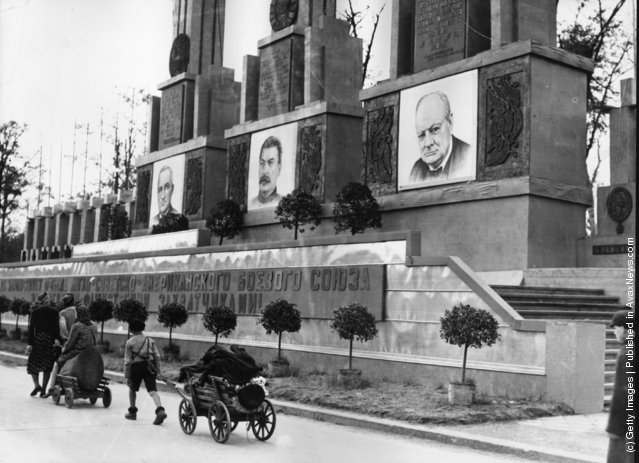© Coll Christian Le Corre
-
Par Frawsy le 28 Novembre 2013 à 19:32
La France rurale en 1900
L'ouvrage "Visages d'une France rurale" présente des images des campagnes françaises et de leurs habitants datées du début du XXe siècle. De vraies pépites historiques. Ici, dans les Landes, les animaux et les familles paysannes partagent la pièce à vivre. En 1929, une loi a interdit de faire dormir le personnel dans les mêmes pièces que les animaux.
© Coll Christian Le CorreLA CHANTEUSE DE COMPLAINTES
Au début des années 1900, dans les campagnes, circulent encore des voitures à chiens. Ici, une chanteuse de complaintes dirige cet attelage. Ces chanteuses itinérantes allaient de place en place et, pour quelques sous, faisaient le récits de faits divers effrayants. Cette carte postale permet de redécouvrir cette ancienne coutume bretonne.
© Hippolyte GancelDES EXPLOITS ÉTONNANTS
Dans l'ouvrage "Visages d'une France rurale", Hypolite Gancel et Rosine Lagier présentent également ces figures étonnantes du début du XXe siècle. En 1908, Louis Coulon, mouleur aux usines Saint-Jacques de Montluçon, a ainsi réussi à faire pousser une barbe de 3 m 35.
© Hippolyte GancelLA VIE ARTISANALE AU DÉBUT DU SIÈCLE
Dans cette maison du Finistère, à Bannalec, une famille fabrique des tamis et de cribles, ces appareils pour nettoyer et trier le grain. Au début du XXe siècle, l'artisanat traditionnel est encore bien développé.
© Hippolyte GancelLES DENTELIÈRES À L'OUVRAGE
Au début du XXe siècle, les artisans du textile sont divers : tailleur, couturière, bobineur, dentellière, fabricante de bonnets en coton, chiffonnier... Ici, des dentelières sont à l'oeuvre, en Haute-Loire. Un savoir-faire de précision.
© Hippolyte GancelLES SCHLITTEURS, CES TRANSPORTEURS DE BOIS
C'est surtout dans les forêts vosgiennes (photo) que s'utilise la "schlitte" (mot qui dérive de l'allemand "Schlitten" signifiant traineau). Les schlitteurs transportent le bois sur des chemins de schlittage. Ils freinent la descente de leur chargement. C'est un métier dangereux.
© Hippolyte GancelLES CHARRONS EN 1900
En 1900, les charrons sont les ouvriers qui fabriquent et réparent les chariots, charrettes et autres voitures. A Mohon, dans le Morbihan, ces artisans posent avec les roues de ces véhicules pour présenter leur atelier "Le Floch".
© Hippolyte GancelL'ARRACHEUR DE DENTS SUR LA PLACE PUBLIQUE
En 1900, le brossage de dents n'est pas une pratique développée et les problèmes dentaires sont répandus. Si les villageois ne se rendent que très exceptionnellement chez le dentiste, il peut arriver qu'ils fassent appel à un arracheur de dents. Celui-ci officie en plein air, les jours de foire.
© Hippolyte GancelA L'ÉCOLE EN 1900
En 1900, les classes ne sont pas mixtes. Les enfants commencent l'école à 8 ans, avec six heures de classe par jour. Beaucoup des enfants de paysans ne suivent les cours que durant l'hiver, aidant le reste de l'année aux travaux de la ferme. Sans oublier le catéchisme. Ici, une classe de garçons , à Lamerey, dans les Vosges.
© Rosine LagierLE TABAC À PRISER
Au début du XXe siècle, le tabac se cultive en France, notamment en Gironde, dans le Lot, le Lot-et-Garonne, la Dordogne, les départements alpins, certaines zones du nord et de l'est de la France. A l'époque, le tabac se fume, se mâche ou se prise (photo).
© Coll Christian Le Corre votre commentaire
votre commentaire
-
Par Frawsy le 28 Novembre 2013 à 19:28
Les petits métiers de Paris dans les années 1900
Au début du XXe siècle, le photographe Louis Vert a capturé des images touchantes du "petit peuple" parisien. Des clichés en noir et blanc à redécouvrir aujourd'hui, grâce à la Société française de photographie, qui nous ouvre sa collection. Ici, une vendeuse de légumes, avec sa carriole et sa balance. A l'arrière-plan, on remarquera des annonces pour des cours de dessin... Lire la suite
© Louis Vert / Société française de photographieUNE VENDEUSE DE GLACES
Cette marchande de glaces sur le pavé parisien a réussi à attirer quelques clients. Dans cette série, Louis Vert (1865-1924) a photographié toute une galerie de vendeurs ambulants de la capitale.
© Louis Vert / Société française de photographieDANS LES URINOIRS
Sur ce cliché, Louis Vert a capturé un homme âgé chargé du nettoyage des urinoirs. Sur ce mobilier urbain s'affichent des publicités, dont l'une pour le déstockage de magasins chics : "Habillez-vous richement avec les laissés pour compte des grands tailleurs". Les "laissés pour compte", un parallèle du photographe avec la situation de vieux balayeur ?
© Louis Vert / Société française de photographieLE NETTOYAGE DU PAVÉ PARISIEN
Dans sa série "Les petits métiers" (1900-1906), qui compte pas moins de 85 sujets, Louis Vert a notamment photographié un "arroseur à la lance place de la Concorde". Une photographie qui dévoile un ancien système de tuyauterie.
© Louis Vert / Société française de photographieUNE MARCHANDE DE BALLONS
Ce cliché permet d'observer, plus de 100 ans après, les tenues portées par les marchandes ambulantes du début du XXe siècle. Et un landau d'époque.
© Louis Vert / Société française de photographieUN PÂTISSIER AMBULANT
Toujours au début du XXe siècle, ce pâtissier ambulant appâtait les enfants et leurs parents avec ses douceurs autour du bassin du jardin du Luxembourg.
© Louis Vert / Société française de photographieDE LA SOUPE VENDUE DANS LA RUE
Cette marchande de soupes réchauffait les passants. Mais attention, ici pas question d'emporter son achat comme cela se fait aujourd'hui : à consommer sur place, dans des bols fournis par la cuisinière et récupérés ensuite.
© Louis Vert / Société française de photographieCHAUDS, LES MARRONS !
La vente de marrons chauds, une vraie tradition en France, puisque ce vendeur attirait déjà les passants à Paris, au début du XXe siècle.
© Louis Vert / Société française de photographieDES CLICHÉS INSTANTANÉS
Lors de l'hommage rendu à Louis Vert en 1925, quelques mois après sa mort, la Société d'Excursions des Amateurs de Photographies soulignait la qualité du travail de cet artiste amateur. "L'instantané en photographie n'est pas toujours facile et bien que nombre d'amateurs le pratiquent couramment, bien peu arrivent à des résultats vraiment intéressants". (Louis Vert, photographe de l'animation de la rue à Paris, Alain Fourquier, "Au bibliophile parisien")
© Louis Vert / Société française de photographieISSU D'UN MILIEU MODESTE
Le photographe amateur Louis Vert était issu d'un milieu modeste, d'où peut-être la proximité avec les Parisiens "simples" qu'il a immortalisés, qui se dégage de ses clichés. Parallèlement à sa passion pour la photographie, il exerçait le métier d'imprimeur, dans l'imprimerie familiale.
© Louis Vert / Société française de photographieUN TÉMOIGNAGE HISTORIQUE
Les clichés de Louis Vert constituent un vrai témoignage historique. Outre les petits métiers et ouvriers aux activités disparues ou presque (ci-dessus), celui-ci avait également photographié les clochards à Paris.
© Louis Vert / Société française de photographieCARTES POSTALES ET PANIERS
Sur cette image apparaît la petite pancarte "les cartes postales des Halles se vendent au 106 rue de Rambuteau". Au haut de l'échelle, l'appareil photo.
© Louis Vert / Société française de photographieA L'AFFÛT DES "CRIS DE PARIS"
Louis Vert, à travers ses clichés, était à la recherche des "cris de Paris", prononcés par ces personnages ambulants qui trottaient sur le pavé parisien et peu à peu remplacés par des kiosques et autres boutiques.
© Louis Vert / Société française de photographieUN PIONNIER DU PHOTO-REPORTAGE
En 2009, des photos de Louis Vert ont été exposées au Jeu de Paume. Le catalogue de cette exposition sur "les amateurs photographes autour de 1900 dans les collections de la Société française de photographie" décrivait cet homme comme un "pionnier du photo-reportage".
© Louis Vert / Société française de photographieUN PEINTRE À L'OUVRAGE
Dans sa série photographique, Louis Vert n'a pas seulement immortalisé les marchands de la capitale. Les artistes ont aussi leur place sur le pavé.
© Louis Vert / Société française de photographieEN SAVOIR PLUS
Dans sa collection, qui est la plus importante collection privée de photographies historiques en Europe, la Société française de photographie (SFP), association qui existe depuis 159 ans, dispose de ces images exceptionnelles prises par Louis Vert (1865-1924). Ce photographe amateur est un pionnier du photo-reportage et a parcouru les trottoirs parisiens pour immortaliser les "petits métiers", mais aussi les clochards de la capitale au début du XXe siècle.
 2 commentaires
2 commentaires
-
Par Frawsy le 23 Novembre 2013 à 13:03
Les champs de riz
A man irrigating a rice paddy field using a traditional method. (Photo by Fox Photos/Getty Images). Japan, circa 1938A Filipino woman planting rice as she stands knee deep in the waters of a paddy field. (Photo by Fox Photos/Getty Images). Circa 1947Two girls wearing large sunhats in a rice field in Indonesia, one holding a bamboo clapper. When this split bamboo is vibrated by hand, birds are frightened away from the ripening crop. (Photo by Richard Harrington/Three Lions/Getty Images). Circa 1950Youths turning a water wheel for the irrigation of Asian rice fields and tea gardens. (Photo by Three Lions/Getty Images). Circa 1950A Chinese farmer wearing traditional clothes working in a rice field before its annual flooding. (Photo by Three Lions/Getty Images). Circa 1950Rice field workers taking their lunch from a communal bowl. (Photo by Three Lions/Getty Images). Nigeria, circa 1950A woman worker passes through rice fields in a rural Japanese village. The large thatched house in the background will house about 25 people, and is typical to the region. (Photo by Orlando /Three Lions/Getty Images). Circa 1950A Japanese woman removing weeds from a rice field. (Photo by Three Lions/Getty Images). Circa 1950One of the women working in a north Italian rice field rests against a friend. (Photo by Keystone Features/Getty Images). 28th June 1951Rice is stacked in bundles in the fields in Bali after it is cut. It is then carried to a granary for storage. (Photo by Three Lions/Getty Images). Circa 1954A farmer guides two oxen ploughing a paddy field in central India. The fields stretch for miles with no greenery, apart from lines of palm trees placed to mark field boundaries. (Photo by Three Lions/Getty Images). Circa 1955Despite being best known for its wine and cork harvests, Portugal's rice fields have been a booming part of the country's economy since it was inherited from Arab Invaders; here a field worker in traditional Portuguese dress. (Photo by Bert Hardy/Picture Post/Getty Images). 29th October 1955Women at work transplanting seedlings in a rice field on the Malabar Coast in the south-west of India. Rice is grown on coastal plains, tidal deltas and river basins where fresh water is available to submerge the land. (Photo by Three Lions/Getty Images). Circa 1960A farm worker ploughing a rice paddy with a plough pulled by a water buffalo in Taiwan (Formosa). (Photo by Three Lions/Getty Images). Circa 1955A Vietnamese home-guard protects rice-paddy field workers in the Mekong Delta against attacks from guerillas who want to impede the South Vietnamese food supply. (Photo by Keystone/Getty Images). 12th March 1962A Taiwanese farm worker pulls a water buffalo by the nose after a long day working in the rice fields. (Photo by Keystone/Getty Images). 19th October 1968 votre commentaire
votre commentaire
-
Par Frawsy le 23 Novembre 2013 à 13:00
Les Bédouins
Environ 4 millions de Bédouins vivent principalement dans les désert d'Arabie et Syrie, le désert du Sinaï et le Sahara, reconnaissables par leurs dialectes arabes, culture arabe et structure sociale spécifiques. De nos jours, seuls environ 5 % des Bédouins du Moyen-Orient sont des nomades vivant de l'élevage des caprins, des ovins et des camélidés. Quelques Bédouins du Sinaï sont encore semi-nomades. Pour certains Bédouins, il ne faut qu'appartenir à une tribu bédouine pour se revendiquer Bédouin, mais pour d'autres il faut de plus mener une vie de nomade, ce qui en exclut les sédentaires.
Le mot Bédu veut dire « habitant du désert » en arabe, Bédouin est le pluriel du mot, même si Bédu peut aussi être utilisé comme un pluriel.
de Wikipédia
A young bedouin “spy” in Jiddah (Jedda) leans on his sword as he keeps watch. (Photo by General Photographic Agency/Getty Images). Circa 1930Using their horse for cover, members of the Arab Legion stage a realistic “Bedouin attack” at Amman, the capital of Jordan. (Photo by J. Smith/Fox Photos/Getty Images). 25th November 1936A Bedouin shepherd carrying a young lamb on the hills of Palestine. (Photo by Fox Photos/Getty Images). 12th February 1938A Bedouin Arab family speaks with Jewish pioneering settlers at the gate of their cooperative farming community Septmber 30, 1946 of Kibbutz Urim in the Negev Desert, during the British Mandate of Palestine, in what would later become the State of Israel. (Photo by Zoltan Kluger/GPO via Getty Images)A Bedouin woman cooking flatbread outside her tent in Israel, circa 1950. (Photo by Chalil Raad/Three Lions/Hulton Archive/Getty Images)A Bedouin sitting on a stationary camel in the Trans-Jordanian desert. (Photo by Three Lions/Getty Images). Circa 1950An elderly Arab Bedouin sits loading and smoking a pipe. (Photo by Three Lions/Getty Images). Circa 1950A group of Bedouin Arab men, who are working on the laying of a 560 mile long pipeline from Kirkuk in north Iraq to Bania on the Syrian coast for the Iraq Petroleum Company, having their lunch surrounded by sections of the pipe. (Photo by Fox Photos/Getty Images). 4th March 1952Bedouins (Arab., Badawi, “dwellers in the desert”), nomadic Arabs in the Jordan Desert at camp. Virtually all Bedouins are Muslims. (Photo by MacDonald Hastings/Hulton Archive/Getty Images). 1955A Bedouin boy. (Photo by MacDonald Hastings/Hulton Archive/Getty Images). 1955Young Bedouin boys barefoot in the desert. (Photo by Three Lions/Getty Images). Circa 1955A Bedouin rifleman hides behind his camel while he carefully takes aim in the Sahara desert. (Photo by Three Lions/Getty Images). Circa 1955RAF nursing attendant Corporal Cy Thomas treating a group of Bedouin children in the southern Arabian desert. (Photo by Central Press/Getty Images). 19th September 1962Bedouin and Yemeni troops at the police fort of Marbakh. (Photo by Keystone/Getty Images). 28th June 1963A veiled Bedouin woman carrying a large bundle of sticks and a lamb in the Sinai Peninsula. (Photo by Keystone Features/Getty Images). August 1966Israeli physician Dr. Avraham Hamavi is asssited by Bedouin nurse Amana Abu Halil nurse as he examines a Bedouin woman in a mobile clinic some two years after the Six-Day War on June 10, 1969, near Rafah, Gaza Strip. Thirty-eight years after Israel captured the Gaza Strip from the Egyptians during the campaign, the Jewish state looks poised to leave the populous Palestinian territory as Prime Minister Ariel Sharon's disengagement plan approaches its August 15, 2005 implementation. (Photo by Moshe Milner/GPO via Getty Images)Bedouin Arab fishermen bring in their catch June 3, 1975 on Lake Bardawil near the Israeli settlement of Nahal Yam in the Sinai Desert which was later evacuated as part of Israel's peace treaty with Egypt in 1982. (Photo by Shalom Bar Tal/GPO via Getty Images)An Israeli settler farmer carries a couple of local Bedouin laborers on his tractor March 10, 1972 in the Israeli settlement of Moshav Sadot, in the Yamit area in the Sinai Desert, some 10 years before it was evacuated as part of Israel's peace treaty with Egypt in 1982. (Photo by Moshe Milner/GPO via Getty Images) votre commentaire
votre commentaire
-
Par Frawsy le 23 Novembre 2013 à 12:55
L'année 1945 - Partie 3
Germans returning to Berlin walk past the saluting base for the Berlin Victory March Past which is decorated with pictures of President Truman, Stalin and Winston Churchill. The writing underneath is in Russian. (Photo by Fred Ramage/Keystone/Getty Images). 9th July 1945
US 5th Division Marines display Japanese battle flags captured in the battle at Iwo Jima. The US Army landed on Iwo Jima 19th February 1945. (Photo by Keystone/Getty Images)
Soldiers of the 70th division of the American 7th Army hold up a Nazi flag and a portrait of Adolf Hitler, taken during the World War II capture of Saarbrucken. (Photo by Horace Abrahams/Keystone/Getty Images). 22nd March 1945
Three Japanese prisoners of war surrounded by American soldiers after they were captured during fighting on Iwo Jima. (Photo by Central Press/Getty Images). 8th March 1945
Australian Troops returning to Britain from the Far East, show off their Japanese trophies of war. (Photo by Express/Express/Getty Images). September 1945
General Douglas MacArthur (1880–1964) looks down on dead Japanese soldiers after a fierce battle on Bataan. (Photo by Aaron/Hulton Archive/Getty Images). March 1945
One of the ten German stormtroopers accused by captured Wehrmacht men of killing American prisoners of war at Malmedy, Belgium, during the Battle of the Bulge. They were taken by the 3rd Army in Germany and two of them were beaten by Wehrmacht soldiers. (Photo by Keystone/Getty Images). 7th May 1945
US tanks and troops advance along the Dachauerstrasse, Munich, to occupy the city. (Photo by Horace Abrahams/Keystone/Getty Images). 3rd May 1945
Displaced Persons crossing a bridge on the River Elbe at Tangermunde, which has been blown up by the Germans, to escape the chaos behind German lines caused by the approach of the advancing Russians. (Photo by Fred Ramage/Keystone/Getty Images). 1st May 1945
A captured Wehrmacht soldier identifies an SS trooper as one those who shot US Army prisoners in Malmedy, Belgium, during the “Battle of the Bulge”. These men were captured by the 3rd US Army near Passau, Germany. (Photo by Keystone/Getty Images). 7th May 1945
Liberated prisoners from Dachau, the German concentration camp wave in joy. Those wearing striped uniforms are political prisoners whose fate was cremation if they had not been liberated by the US 7th Army. (Photo by Horace Abrahams/Keystone/Getty Images). 7th May 1945
Russian and American troops meet up on the River Elbe. (Photo by Keystone/Getty Images). 27th April 1945
Boy meets girl in the unleashed joy of the VJ Day celebration. (Photo by Three Lions/Getty Images). United States, August 1945
A British Prisoner of War, about to be transported back to England, wears a German peaked cap which he has picked up as a souvenir. (Photo by Haywood Magee/Picture Post/Getty Images). 12th May 1945
Field Marshal Bernad L. Montgomery (1887–1976, right) gives his terms of surrender to the defeated German delegation, headed by Admiral von Friedeburg, General Kinzel and Admiral Wagner, at the headquarters of the British 2nd Army. (Photo by Keystone/Getty Images). 3rd May 1945
Allied soldiers queuing outside the devastated German Chancellery to see the remains of Adolf Hitler's underground shelter where he is reputed to have committed suicide. (Photo by Fred Ramage/Keystone/Getty Images). 27th July 1945
With unrestrained emotion, Allied prisoners of war at Aomori near Yokohama, Japan, cheer wildly as approaching rescuers of the US Navy bring in food, clothing and medical supplies. The men are waving flags of the United States, Great Britain, and Holland. (Photo by Keystone/Getty Images). 29th August 1945
Russian Foreign minister Vyacheslav Molotov broadcasting from the United Nations conference in San Francisco after the announcement of the German surrender. (Photo by Fox Photos/Getty Images). 14th May 1945
A wounded American serviceman during a ticker tape parade in New York following press reports of the unconditional surrender of Germany. (Photo by Fox Photos/Getty Images) 7th May 1945
English, American and Soviet officers at the Femina nightclub in Nuremburger Strasse, Berlin. (Photo by Fred Ramage/Keystone/Getty Images). 15th August 1945
German police and citizens of Ludwigslust file past bodies of inmates of nearby Wobbelin concentration camp. The bodies have been exhumed from a mass grave and are to be reburied in the town. (Photo by Hulton Archive/Getty Images). 7th May 1945
Soldiers from the American and Russian Armies gather around a jeep and chat and laugh, Torgau, Germany, April 28, 1945. (Photo by Hulton Archive/Getty Images)
US and Russian commanders exchange stories at a meeting on the banks of the Elbe River, Torgau, Germany, April 28, 1945. (Photo by Hulton Archive/Getty Images)
American Major-General Emil F. Reinhardt (1888–1969) (left), Commanding General of the 69th Division, shakes hands with his Russian counterpart, Major-General Vladimir V. Rusakov, Commanding Officer of the 58th Guards Division, at a meeting of American and Russian troops near the Elbe River and the town of Torgau, Germany, late April, 1945. The two armies had met up on the 25th of April, effectivrly splitting the opposing German army. (Photo by Hulton Archive/Getty Images)
Soldiers and their partners celebrate Victory over Japan Day (V-J Day), in New York City, 14th August 1945. (Photo by Hulton Archive/Getty Images)
Female Russian soldier grinning broadly while showing off her medals and a US Army Officer's insignia pinned to her shirt after the Allied troops met following the fall of Berlin. Berlin, Germany, July 1945. (Photo by William Vandivert/Life)
Russian military personnel under archway entrance to the Reichstag building which is covered in graffiti scrawled & scratched by their conquering comrades, making the spot a top “tourist” draw for the Russian troops. Berlin, Germany, July 1945. (Photo by William Vandivert/Life)
Russian soldiers (& unident. in suit) lifting large bronze Nazi Party eagle symbol which they removed from over doorway of the Reichschancellery bldg. to be taken as a trophy. Berlin, Germany, July 1945. (Photo by William Vandivert/Life)
US sailor bending young nurse over his arm to give her passionate kiss in middle of Times Square as others look on amused, during celebration of Japan's surrender to Allies at end of WWII. New York, NY, US. August 14, 1945. (Photo by Lt. Victor Jorgensen/Life) votre commentaire
votre commentaire Suivre le flux RSS des articles de cette rubrique
Suivre le flux RSS des articles de cette rubrique Suivre le flux RSS des commentaires de cette rubrique
Suivre le flux RSS des commentaires de cette rubrique






















 Twitter
Twitter del.icio.us
del.icio.us Facebook
Facebook Digg
Digg Technorati
Technorati Yahoo!
Yahoo! Stumbleupon
Stumbleupon Google
Google Blogmarks
Blogmarks Ask
Ask Slashdot
Slashdot











































































